The Monarchy in Daily Life
Some Examples of How Canada’s Monarchical Identity is Woven Deeply into the Fabric of Daily Life
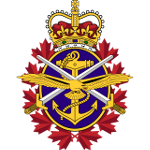 To underline that the ultimate loyalty of the Canadian Forces is not to a politician but to The King, the ships of the Royal Canadian Navy are not designated “Stephen Harper’s Vessels” or “Justin Trudeau’s Cruisers” but as “HMCS”—His Majesty’s Canadian Ship. Similarly, The Monarch honours the service of our Air Force by designating it “Royal”, in the same way as some Canadian Regiments have been designated as, for instance, “The Royal Regiment of Canada” or the “Royal Canadian Artillery Corps”. The King and members of his family also serve as Colonels-in-Chief of many Canadian military units, a role which gives its members a cohesiveness and direct link to the Crown, with the CIC acting as the honorary “head of the family”. We’ve all seen armed force members exchange salutes. These are not designed as a personal honour to the officer of higher rank, but as a mark of respect to The King, whose Commission all officers hold—thus the term “commissioned officer”. A different kind of salute is that fired by gun batteries of the CF on Royal Anniversaries and holidays such as Victoria Day, The Sovereign’s Official Birthday in Canada.
To underline that the ultimate loyalty of the Canadian Forces is not to a politician but to The King, the ships of the Royal Canadian Navy are not designated “Stephen Harper’s Vessels” or “Justin Trudeau’s Cruisers” but as “HMCS”—His Majesty’s Canadian Ship. Similarly, The Monarch honours the service of our Air Force by designating it “Royal”, in the same way as some Canadian Regiments have been designated as, for instance, “The Royal Regiment of Canada” or the “Royal Canadian Artillery Corps”. The King and members of his family also serve as Colonels-in-Chief of many Canadian military units, a role which gives its members a cohesiveness and direct link to the Crown, with the CIC acting as the honorary “head of the family”. We’ve all seen armed force members exchange salutes. These are not designed as a personal honour to the officer of higher rank, but as a mark of respect to The King, whose Commission all officers hold—thus the term “commissioned officer”. A different kind of salute is that fired by gun batteries of the CF on Royal Anniversaries and holidays such as Victoria Day, The Sovereign’s Official Birthday in Canada.
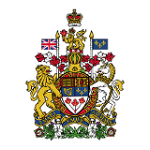 Whenever you return to Canada after a holiday abroad or a shopping trip across the border, the Canada Border Service Agency officers who ask you irritating questions will wear on their uniform a Badge of the CBSA, surmounted by a Crown. Should your MP write you to answer a letter, the letterhead and envelope bear the Canadian Coat of Arms, which include both Canada’s motto. These are just a few of many examples of a very visible way by which the Canadian Crown authorizes symbols which proclaim Canada’s sovereignty and also quickly identify officials of the state. The Canadian Heraldic Authority, acting through the Governor General, exercises The King’s Prerogative in this respect, while only The King personally can approve use of the Royal Crown. If you make a point of looking around you, you may be surprised at how many similar uses of armorials and badges you will see—from the Crown on military uniforms to the shields on many police vehicles. As well, the Heraldic Authority grants Arms to individuals and organizations which petition for them. The design reflects the person’s work and interests, and is a not inexpensive process, but is a lovely way to celebrate a special birthday or achievement, and to link modern heraldry to its ancient origins whereby knights, encased in armour on the battlefield, could be identified and known as friend or foe.
Whenever you return to Canada after a holiday abroad or a shopping trip across the border, the Canada Border Service Agency officers who ask you irritating questions will wear on their uniform a Badge of the CBSA, surmounted by a Crown. Should your MP write you to answer a letter, the letterhead and envelope bear the Canadian Coat of Arms, which include both Canada’s motto. These are just a few of many examples of a very visible way by which the Canadian Crown authorizes symbols which proclaim Canada’s sovereignty and also quickly identify officials of the state. The Canadian Heraldic Authority, acting through the Governor General, exercises The King’s Prerogative in this respect, while only The King personally can approve use of the Royal Crown. If you make a point of looking around you, you may be surprised at how many similar uses of armorials and badges you will see—from the Crown on military uniforms to the shields on many police vehicles. As well, the Heraldic Authority grants Arms to individuals and organizations which petition for them. The design reflects the person’s work and interests, and is a not inexpensive process, but is a lovely way to celebrate a special birthday or achievement, and to link modern heraldry to its ancient origins whereby knights, encased in armour on the battlefield, could be identified and known as friend or foe.
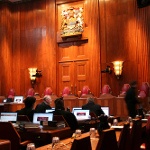 IIf you have ever received a summons to give evidence in a criminal trial, or to be a member of a jury, you may have noticed that it tells you that your appearance is commanded by “His Majesty The King”. Criminal cases are referred to as Rex v Smith—Latin words for King and V (versus) meaning “against” the accused. What our American friends call “the prosecutor” or “district attorney” we call “the Crown Attorney”, the person who represents the state in criminal trials. Now of course The King is not personally involved in any way in these proceedings. But the justice system operates in his name to underline that Canada operates under the rule of law and not by the whim of a ruler or by a system of bribes as in many non-democratic countries. Judges are loyal to The King, not a politician—our laws are made by Parliament in his name—and not to a politician who might want a decision to go a certain way, or to have a pesky opponent locked up, or worse. In this way, too, while Canadians have to obey laws, they do not have to support them—and are free to speak out to urge Parliament to change their provisions. From time to time, the government will ask a Judge or group of Judges to form a “Royal Commission”, usually to inquire in a non-partisan way into matters of controversy. Some recent Royal Commissions have included inquiries into Aboriginal Peoples (1991-1996), New Reproductive Technologies (1993-1994) and the Future of Health Care in Canada (2002-2004).
IIf you have ever received a summons to give evidence in a criminal trial, or to be a member of a jury, you may have noticed that it tells you that your appearance is commanded by “His Majesty The King”. Criminal cases are referred to as Rex v Smith—Latin words for King and V (versus) meaning “against” the accused. What our American friends call “the prosecutor” or “district attorney” we call “the Crown Attorney”, the person who represents the state in criminal trials. Now of course The King is not personally involved in any way in these proceedings. But the justice system operates in his name to underline that Canada operates under the rule of law and not by the whim of a ruler or by a system of bribes as in many non-democratic countries. Judges are loyal to The King, not a politician—our laws are made by Parliament in his name—and not to a politician who might want a decision to go a certain way, or to have a pesky opponent locked up, or worse. In this way, too, while Canadians have to obey laws, they do not have to support them—and are free to speak out to urge Parliament to change their provisions. From time to time, the government will ask a Judge or group of Judges to form a “Royal Commission”, usually to inquire in a non-partisan way into matters of controversy. Some recent Royal Commissions have included inquiries into Aboriginal Peoples (1991-1996), New Reproductive Technologies (1993-1994) and the Future of Health Care in Canada (2002-2004).
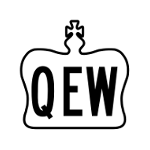 If you go camping for a weekend, or enjoy a picnic away from the busy city, you may well find that a provincial campsite or federal park is posted “Crown Lands—no shooting or hunting”. The term does not mean that The King personally owns or administers the park, but that his government—elected by us, provincial or federal, owns and controls them. Across all of Canada, great tracts of forest and tundra are Crown Lands. Certain bridges are also controlled by the federal government, and so are patrolled by the RCMP rather than a provincial or local police force. In the same way, some provinces such as Ontario have retained the tradition of designating highways as the King’s Highway (relating to the monarch when the route was first built) to emphasize that all have access to it—recalling an earlier time in our history when most roads were privately owned, and their owners, not the government, kept toll fees for their personal enrichment.
If you go camping for a weekend, or enjoy a picnic away from the busy city, you may well find that a provincial campsite or federal park is posted “Crown Lands—no shooting or hunting”. The term does not mean that The King personally owns or administers the park, but that his government—elected by us, provincial or federal, owns and controls them. Across all of Canada, great tracts of forest and tundra are Crown Lands. Certain bridges are also controlled by the federal government, and so are patrolled by the RCMP rather than a provincial or local police force. In the same way, some provinces such as Ontario have retained the tradition of designating highways as the King’s Highway (relating to the monarch when the route was first built) to emphasize that all have access to it—recalling an earlier time in our history when most roads were privately owned, and their owners, not the government, kept toll fees for their personal enrichment.
Some main routes are also named to honour our monarchs—thus Ontario’s Queen Elizabeth Way, which runs from Toronto to Niagara, and honours the late Queen Mother from her 1939 tour with the King; Alberta’s Queen Elizabeth II Highway between Edmonton and Calgary, renamed by the provincial government when the Monarch returned home to celebrate the centenary of Alberta in Confederation in 2005; and Nova Scotia ‘s Highway 206, leading to the PEI Ferry, named Jubilee Highway in 2012.
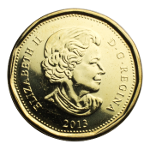 Look at your pocket change: on every coin there is the effigy of Canada’s Late Queen and we hope before long to see The King being portrayed there. Occasionally you might run across a coin bearing the image of our King, George VI, who died in 1952. And very rarely—perhaps rummaging in an old desk—you might find one with an engraving of George V, our King’s great-grandfather. They are all legal tender but you might want to collect the older ones. As well, if you’re lucky enough to have a $20 bill in your wallet, a portrait of The Late Queen appears there, too. Since the beginning of Canada’s history, some banknotes and all coins have borne the Sovereign’s picture, not only as a boast of national pride and identity, but also as a way of guaranteeing “this coin or banknote has real value”.
Look at your pocket change: on every coin there is the effigy of Canada’s Late Queen and we hope before long to see The King being portrayed there. Occasionally you might run across a coin bearing the image of our King, George VI, who died in 1952. And very rarely—perhaps rummaging in an old desk—you might find one with an engraving of George V, our King’s great-grandfather. They are all legal tender but you might want to collect the older ones. As well, if you’re lucky enough to have a $20 bill in your wallet, a portrait of The Late Queen appears there, too. Since the beginning of Canada’s history, some banknotes and all coins have borne the Sovereign’s picture, not only as a boast of national pride and identity, but also as a way of guaranteeing “this coin or banknote has real value”.
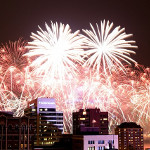 The King has an “official birthday” in each of the countries where he is Sovereign. In Canada, Parliament decided that this should coincide with Victoria Day, the popular Canadian holiday in May, featuring picnics and fireworks, which marks the actual birth date (May 24) of Queen Victoria, the Mother of Confederation. On Christmas Day, Our Monarch broadcasts at noon a message of reflection and encouragement to the Commonwealth, when Canadian families often gather around to hear our monarch during a holiday which is of religious importance for Christians, but also a happy time for people of all faiths. In the same way, most faiths regularly or occasionally include a prayer for The King in their services.
The King has an “official birthday” in each of the countries where he is Sovereign. In Canada, Parliament decided that this should coincide with Victoria Day, the popular Canadian holiday in May, featuring picnics and fireworks, which marks the actual birth date (May 24) of Queen Victoria, the Mother of Confederation. On Christmas Day, Our Monarch broadcasts at noon a message of reflection and encouragement to the Commonwealth, when Canadian families often gather around to hear our monarch during a holiday which is of religious importance for Christians, but also a happy time for people of all faiths. In the same way, most faiths regularly or occasionally include a prayer for The King in their services.
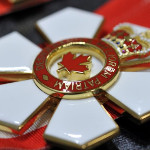 All of us have seen veterans proudly wearing their medals on Remembrance Day. Perhaps a neighbour or friend has received the Caring Canadian Award or the Diamond Jubilee Medal. As “the Fount of Honour”, The King personally approves the institution and design of all official honours and decorations in Canada. These include the national honours system, including the Order of Canada; many provincial honours such as The Order of Ontario and The Saskatchewan Order of Merit; and decorations given our brave soldiers such as The Canadian Victoria Cross, together with medals honouring civilian heroism such as the Medal of Bravery. Some organizations are also allowed to give medals or other honours which use Elizabeth II’s name, such as The Queen’s Venturer Award within Scouts Canada.
All of us have seen veterans proudly wearing their medals on Remembrance Day. Perhaps a neighbour or friend has received the Caring Canadian Award or the Diamond Jubilee Medal. As “the Fount of Honour”, The King personally approves the institution and design of all official honours and decorations in Canada. These include the national honours system, including the Order of Canada; many provincial honours such as The Order of Ontario and The Saskatchewan Order of Merit; and decorations given our brave soldiers such as The Canadian Victoria Cross, together with medals honouring civilian heroism such as the Medal of Bravery. Some organizations are also allowed to give medals or other honours which use Elizabeth II’s name, such as The Queen’s Venturer Award within Scouts Canada.
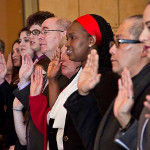 Judges, people elected to serve in Parliament or a provincial legislature and our new fellow Canadians all take Oaths to The King as they take up their responsibilities. They thereby underline that their duty is to the country as a whole, personified by our Sovereign. The Oath of Allegiance is a reciprocal one, because at each Coronation, the new Monarch takes an Oath to serve the peoples, “according to their respective laws and customs”. Some private organizations also include an expression of loyalty to The King in their customs, such as that of the Scouting movement, most of whose components have young persons promise “to do my duty to God and The King”.
Judges, people elected to serve in Parliament or a provincial legislature and our new fellow Canadians all take Oaths to The King as they take up their responsibilities. They thereby underline that their duty is to the country as a whole, personified by our Sovereign. The Oath of Allegiance is a reciprocal one, because at each Coronation, the new Monarch takes an Oath to serve the peoples, “according to their respective laws and customs”. Some private organizations also include an expression of loyalty to The King in their customs, such as that of the Scouting movement, most of whose components have young persons promise “to do my duty to God and The King”.
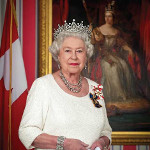 You will often see a picture of Elizabeth II hanging in fire halls, school, civic buildings, courtrooms, council chambers and post offices, to name but a few. Available at no cost from Government or the Monarchist League, pictures are hung by Canadian organizations and individuals to show our shared pride in our identity and affection for our Sovereign, much as in our homes we often display portraits or photos of our kinsfolk. We will expect a official Portrait of The King to be available, and similarly visible in the place of honour, though there will be no reason to stop displaying that of our beloved Late Queen as well!
You will often see a picture of Elizabeth II hanging in fire halls, school, civic buildings, courtrooms, council chambers and post offices, to name but a few. Available at no cost from Government or the Monarchist League, pictures are hung by Canadian organizations and individuals to show our shared pride in our identity and affection for our Sovereign, much as in our homes we often display portraits or photos of our kinsfolk. We will expect a official Portrait of The King to be available, and similarly visible in the place of honour, though there will be no reason to stop displaying that of our beloved Late Queen as well!
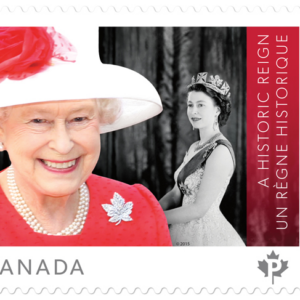 Canada Post has always offered at least one postage stamp bearing The Queen’s picture at the first-class letter rate for within Canada and it is expected to do so during Charles’ reign. This stamp, kept in supply, is called a “definitive”. Over the years, Canada Post has also issued stamps of Elizabeth II and members of our Royal Family to honour special occasions, such as our Monarch’s Golden Jubilee in 2002 and The Queen Mother’s 100th birthday in 2000; The Queen’s Golden and Diamond Jubilees in 2002 & 2012 and the Royal Engagement, Marriage, and Birth of Prince George in 2011-2013. These are called “commemoratives”. Other commemoratives with Royal associations have included stamps honouring former Governors-General or meetings of the Commonwealth. Like coins and bank notes, they hold their value forever—and in a similar way they draw the attention of mail recipients to the human faces behind our monarchical form of government.
Canada Post has always offered at least one postage stamp bearing The Queen’s picture at the first-class letter rate for within Canada and it is expected to do so during Charles’ reign. This stamp, kept in supply, is called a “definitive”. Over the years, Canada Post has also issued stamps of Elizabeth II and members of our Royal Family to honour special occasions, such as our Monarch’s Golden Jubilee in 2002 and The Queen Mother’s 100th birthday in 2000; The Queen’s Golden and Diamond Jubilees in 2002 & 2012 and the Royal Engagement, Marriage, and Birth of Prince George in 2011-2013. These are called “commemoratives”. Other commemoratives with Royal associations have included stamps honouring former Governors-General or meetings of the Commonwealth. Like coins and bank notes, they hold their value forever—and in a similar way they draw the attention of mail recipients to the human faces behind our monarchical form of government.
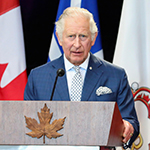 The Canadian Parliament consists of The King, The Senate and The House of Commons. No bill can become law (an Act of Parliament) without The Royal Assent. Parliament is summoned in by The Queen, and can only be dissolved by similar Royal action. Prorogation—the ending of a Parliamentary session—is also a Royal Act; and as recent events have shown, no mere formality. Parliament always begins with a Speech from the Throne, read by the monarch or the Governor General, federally, or a lieutenant governor in the case of the provincial legislatures. And a Royal Recommendation must accompany any provision for the spending of money. In this way, the ancient role of the Crown continues as protector of the stability and fairness of the political system.
The Canadian Parliament consists of The King, The Senate and The House of Commons. No bill can become law (an Act of Parliament) without The Royal Assent. Parliament is summoned in by The Queen, and can only be dissolved by similar Royal action. Prorogation—the ending of a Parliamentary session—is also a Royal Act; and as recent events have shown, no mere formality. Parliament always begins with a Speech from the Throne, read by the monarch or the Governor General, federally, or a lieutenant governor in the case of the provincial legislatures. And a Royal Recommendation must accompany any provision for the spending of money. In this way, the ancient role of the Crown continues as protector of the stability and fairness of the political system.
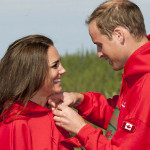 Like many of the important aspects of life—courtesy, kindness, compassion—the Royal Anthem, popularly known as “God Save The King”, is sung not because of any legislation but because people wish to show their loyalty to the Sovereign and so the country by singing together. So you will often hear the Royal Anthem sung or played at a variety of events, from Legion meetings and Rotary Club lunches to school functions.
Like many of the important aspects of life—courtesy, kindness, compassion—the Royal Anthem, popularly known as “God Save The King”, is sung not because of any legislation but because people wish to show their loyalty to the Sovereign and so the country by singing together. So you will often hear the Royal Anthem sung or played at a variety of events, from Legion meetings and Rotary Club lunches to school functions.
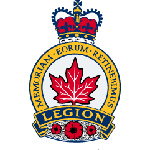 The King encourages the cultural, educational and charitable activities of Canadian life through giving the very rare honour of the designation “Royal” or extending “Royal Patronage”. Thus one of our world-famous ballet companies became in 1953 The Royal Winnipeg Ballet, as well as our principal veterans’ organization gained the designation Royal Canadian Legion in 1962. Among the most recent such designations have been The Royal Canadian Numismatic Association (2007) and The Royal Manitoba Theatre Centre and The Royal College of Chiropractic Sports Sciences (Canada), both in 2010, and The Royal Canadian Marine Search and Rescue in 2012. Many elements of the Armed Services, of police forces and of other government entities are also designated “Royal” such as The Royal Newfoundland Constabulary. The Canadian Naval Association received The Queen’s Patronage in 1995. Other members of the Royal Family also extend their Patronage, such as that of the then Prince of Wales to the Regina Symphony Orchestra, or of the Princess Royal (Anne) to the Canadian Therapeutic Riding Association.
The King encourages the cultural, educational and charitable activities of Canadian life through giving the very rare honour of the designation “Royal” or extending “Royal Patronage”. Thus one of our world-famous ballet companies became in 1953 The Royal Winnipeg Ballet, as well as our principal veterans’ organization gained the designation Royal Canadian Legion in 1962. Among the most recent such designations have been The Royal Canadian Numismatic Association (2007) and The Royal Manitoba Theatre Centre and The Royal College of Chiropractic Sports Sciences (Canada), both in 2010, and The Royal Canadian Marine Search and Rescue in 2012. Many elements of the Armed Services, of police forces and of other government entities are also designated “Royal” such as The Royal Newfoundland Constabulary. The Canadian Naval Association received The Queen’s Patronage in 1995. Other members of the Royal Family also extend their Patronage, such as that of the then Prince of Wales to the Regina Symphony Orchestra, or of the Princess Royal (Anne) to the Canadian Therapeutic Riding Association.
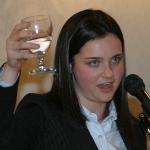 A mark of respect and affection to The King occurs at many public dinners, military mess functions and family meals when “the Loyal Toast” is drunk with the simple words “The King”. In the same way as one might propose a toast to one’s parents on their Golden Wedding Anniversary, or to a friend who has just received a promotion, Canadians often drink the health of the head of our national family, The King.
A mark of respect and affection to The King occurs at many public dinners, military mess functions and family meals when “the Loyal Toast” is drunk with the simple words “The King”. In the same way as one might propose a toast to one’s parents on their Golden Wedding Anniversary, or to a friend who has just received a promotion, Canadians often drink the health of the head of our national family, The King.